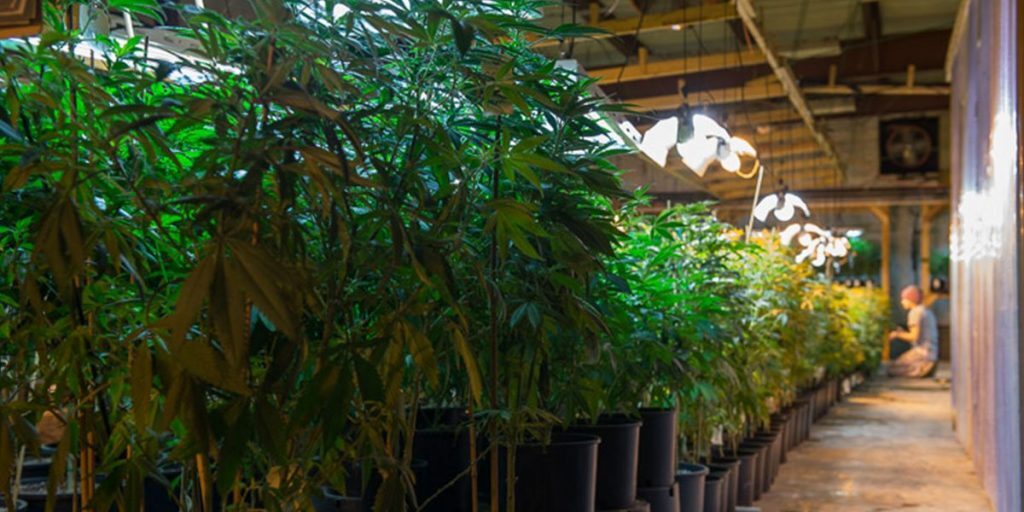What’s the Best Cannabis Grow Light Now?

Illuminating the recent technology changes
In the past decade, horticultural lighting advanced more quickly than any other equipment in the grow room. The list of newly popularized (or newly affordable) innovations goes on and on: LEDs, double-ended HPS, induction lighting, ceramic metal halide…
If you’re a grower, you’ve probably kept up with the news. But dated schools of thought on, say, LEDs, no longer hold true, and older tech like HPS has quietly changed too.
So, if you’re re-envisioning your lighting setup, it may pay dividends to check your current options. This post explores the latest in horticultural lighting tech and hopefully serves as a jumping-off point into better-informed shopping.
High-Intensity Discharge Lights
HID lights are more efficient than ever. The technology, which has been around since the 1960’s, has benefited from recently improved lamps and ballasts.
High-pressure sodium (HPS) traditionalists are happily adopting double-ended bulbs because they produce 10-30% more light than single-ended bulbs. Just like it sounds, the double-ended design sports terminals at both ends of the tube, so the lamp doesn’t need obstructive metal framing like a single-ended bulb. Keeping the framing out of the way of the arc tube aids the increased output, and better ballast technology does the rest. What’s more, double-ended bulbs provide extra ultraviolet and infrared radiation that has been shown to increase growth and trichome production.
Electronic, rather than magnetic, ballasts are now the norm, and those featuring a low-frequency square wave have proven most efficient for powering double-ended HPS bulbs. The chunky, ‘on-off’ square wave of these digital ballasts is always at its voltage-peak (unlike an undulating, up-and-down sine wave). That means light output is more constant, dimming control is better, and harmonic interference is lower than with traditional magnetic ballasts. If you’re looking to switch up your spectrum between veg and flower, the newer ballasts can run high-pressure sodium bulbs and metal halide alike.
Ceramic metal halide (CMH) lamps are the most efficient HID light on the market because of the redesigned arc tube. And despite a higher price point, the ceramic version of metal halide has been embraced by growers seeking a sun-like spectrum. The new ceramic arc tube (rather than the old quartz tube) can run at higher temperatures and pressures, so different combinations of gases can be used. A more aggressive blend of higher-pressure gases bumps up the light intensity and, in turn, the electrical efficiency. CMH has an excellent color rendering index (CRI) too. That means ceramic metal halide creates an easy-on-the-eye spectrum that makes inspecting and photographing plants easy.
Induction Grow Lights
‘Electrodeless’ (or induction) grow lights work without a wired-in power supply. The big benefit is bulb longevity. In vaguely similar fashion to wireless charging tech for cell phones, these lights run on an electromagnetic field that juices up the gas housed inside the bulb. Since the terminals of the bulbs are usually the spot where they fail, an inductive design lengthens the product life.
Light emitting plasma (LEP) offers a spectrum almost identical to the sun—and lower energy usage than HPS. Of course, the catch is a higher up-front cost. But these inductive lights have a longer lifespan than HPS (24,000 hours versus 30,000-40,000 for plasma), and they maintain their output further into their lifespan.
Induction fluorescent lights are the no-terminal version of the T5 lights most growers have used in the past. They may be shaped differently, but induction fluorescent lights are based firmly on the traditional fluorescents. Same veg-friendly spectrum, same low-heat operation. The inductive version, however, has a much longer lifespan (reportedly up to 100,000 hours).
LEDs (Light-Emitting Diodes)
It’s finally time. Most of the complaints that were valid about LEDs five years ago no longer apply to quality fixtures. Once the high sticker price is overcome and the lights are hung, LEDs start saving money and, ultimately, have a lower total cost of ownership.
Depending on the application, LEDs are significantly more energy efficient than the high-intensity discharge lights. The diodes don’t need to be replaced like HID bulbs, and they reliably last the life of the fixture, which is about 100,000 hours.
LEDs’ high cost prohibited adoption, but so too did the quality of light possible using LEDs. The new technology of single-color diodes struggled to match the classic full spectrum of HID lights. Plants grown under LEDs didn’t yield the crop quality marijuana growers could achieve with traditional lighting.
Modern LEDs can achieve any light spectrum and allow the ability to modulate any desired wavelength. As lighting designers experimented to find the ideal lighting spectrum, two philosophies of the LED spectrum have emerged:
Blue/red LED lights: To plants, not all wavelengths of light are created equal. Blue and red light drive photosynthesis more strongly than other colors. To maximize the impact of supplemental light, some LED designers use a spectrum weighted in the blue and red ranges. This school of thought milks the lighting spectrum for maximum impact in the color ranges that matter most.
Full-spectrum LED lights: Manufacturers of full-spectrum or “white” LEDs contend that a spectrum similar to sunlight is necessary for proper growth, and there’s no fooling nature. But even manufacturers of full-spectrum LEDs are likely to mildly customize their spectrums for robust reds and blues.
Selecting the best grow light for your operation isn’t as simple as comparing spec sheets. Considerations within the grow room—like canopy density, heat management or existing infrastructure—will play a role in decision making too. Municipal-level energy rebates may apply to fixtures that are rated more efficient, tipping the scale in favor of LEDs. Or, for those looking for ultimate spectral quality, ceramic metal halide may be the best choice.
For some growers, however, selecting the right lighting may be as simple as looking in their wallets and sticking with what they already have.
Like what you read?
Get more insider industry knowledge sent right to your inbox
"*" indicates required fields